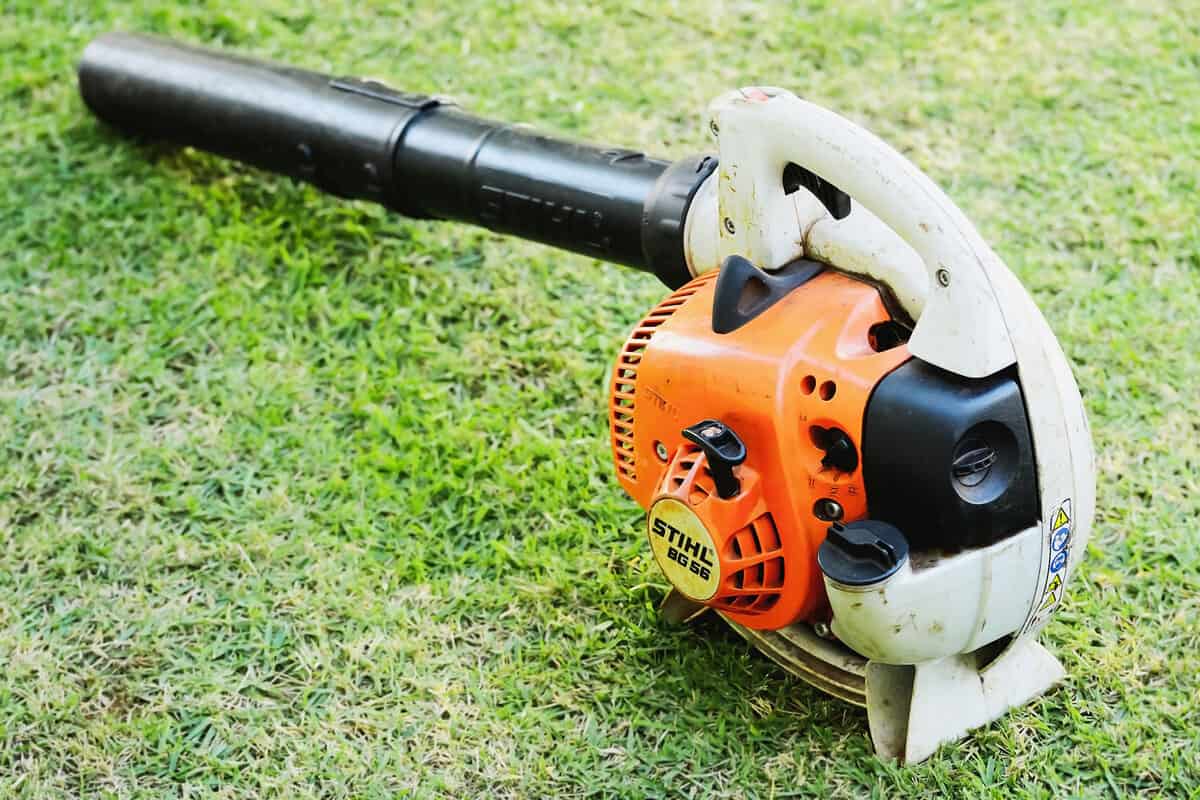If you own a Stihl blower, you might wonder if it needs oil.
The answer is yes, it does!
Stihl blowers are two-stroke engines that require a specific mixture of oil and gasoline to operate effectively.

In this blog, we'll explain what type of oil you should use, how to mix it with gasoline, and what ratio is recommended for your specific blower model.
By the end of this article, you'll have all the information you need to keep your Stihl blower running like a charm.
Do Stihl Blowers Need Oil?
Without oil, the engine won't get the lubrication required for internal parts to move freely.
The Stihl leaf blowers use a gas-to-oil fuel mixture 50:1. This means that for every 50 parts of gasoline, you should add one part of the oil. It's important to use the correct ratio of oil to gas, as stated on the packaging.

You can mix any two-stroke engine oil with gasoline for your Stihl blower. However, Stihl recommends using its own oil brand for optimal performance and protection.
Always use fresh fuel in your gas/oil mixture. If you have leftover fuel from the previous season, it's best to discard it and start with new fuel.
Also, make sure to store your equipment in a dry, dust-free, and frost-free place.
Types of Oil for Stihl Blowers
When it comes to maintaining your Stihl blower, using the right type of oil is crucial. Here are some common types of oil that you can use for your Stihl blower:
1. Two-Stroke Oil
Two-stroke oil is the most common type of oil used for Stihl blowers. It is specially formulated for two-stroke engines and provides excellent lubrication for the engine's moving parts.
This type of oil is mixed with gasoline before being added to the fuel tank. The recommended mixing ratio for Stihl blowers is 50:1, which means 50 parts gasoline to 1 part two-stroke oil.
2. Synthetic Oil
Synthetic oil is another option for Stihl blowers. It is made from chemical compounds and performs better than traditional mineral-based oils.
Synthetic oil has a longer lifespan, better resistance to extreme temperatures, and reduces engine deposits. However, it is more expensive than traditional two-stroke oil.
3. Biodegradable Oil
Biodegradable oil is an environmentally friendly option for Stihl blowers. It is made from vegetable oils and is biodegradable, which means it breaks down naturally over time.
This type of oil is recommended for use in areas with strict environmental regulations.
4. Bar and Chain Oil
Bar and chain oil is a specialized oil that is used to lubricate the bar and chain on Stihl chainsaws.
However, it can also be used for lubricating the gearbox and other moving parts on Stihl blowers. This type of oil is thicker than two-stroke oil and provides better lubrication for high-speed, high-temperature applications.
Be sure to check your owner's manual for the recommended oil type and mixing ratio for your specific model.
How to Add Oil to Stihl Blowers
If you have a Stihl blower, it's important to know how to add oil to keep it running smoothly.
Here are the steps to add oil to your Stihl blower:
Step 1: Check the Oil Level
Before adding oil, it's important to check the oil level. You can do this by looking at the oil tank on the blower. If the oil level is low, you will need to add more oil.
Step 2: Choose the Right Oil
Stihl recommends using their own brand of engine oil specifically designed for their two-stroke machines. This oil should be mixed with gas at a ratio of 50 parts gas to 1 part oil. Make sure to use the correct ratio for your blower.
Step 3: Add the Oil
To add oil, remove the oil cap on the blower and pour the oil into the tank. Be careful not to overfill the tank. It's better to add a little less oil than too much.
Step 4: Replace the Oil Cap
Once you have added the oil, replace the oil cap and make sure it is securely in place.
Step 5: Start the Blower
After adding oil, start the blower and let it run for a few minutes to make sure the oil is distributed throughout the engine.
That's it! Adding oil to your Stihl blower is a simple process that can help keep your blower running smoothly and efficiently.
Effects of Not Using Oil
If you do not use oil in your Stihl blower, you risk damaging the engine and shortening its lifespan. Here are some effects of not using oil:
- Engine damage: Without oil, the engine's moving parts will rub against each other, creating friction and heat. This can cause the engine to seize, or the piston to seize in the cylinder, resulting in damage that may be beyond repair.
- Reduced performance: The engine's performance will suffer if it is not lubricated with oil. It will not run as smoothly, and you may notice a decrease in power and acceleration.
- Increased fuel consumption: Without proper lubrication, the engine will have to work harder to perform the same tasks, resulting in increased fuel consumption.
- Increased emissions: A poorly lubricated engine may produce more emissions, harming the environment and your health.
Wrapping Up
So, adding oil to your Stihl blower is a crucial step in maintaining its performance and longevity. Always use the correct type of oil and mix it in the right proportion as stated in the manufacturer's instructions.
Additionally, consider using pre-mixed fuel and storing your equipment in a dry, dust-free, and frost-free place to prevent damage.
By following these simple maintenance tips, you can unleash the full power and potential of your Stihl blower for years to come! Say goodbye to sluggish performance and hello to effortless, efficient yard work.
So why wait? Give your Stihl blower the care it deserves and enjoy the satisfaction of a job well done!
Enjoying this? Here are related topics you may want to read:
How To Start A Husqvarna Leaf Blower [Step By Step Guide]
How To Reset Oil Life On A Spartan Mower: Step-By-Step Guide
